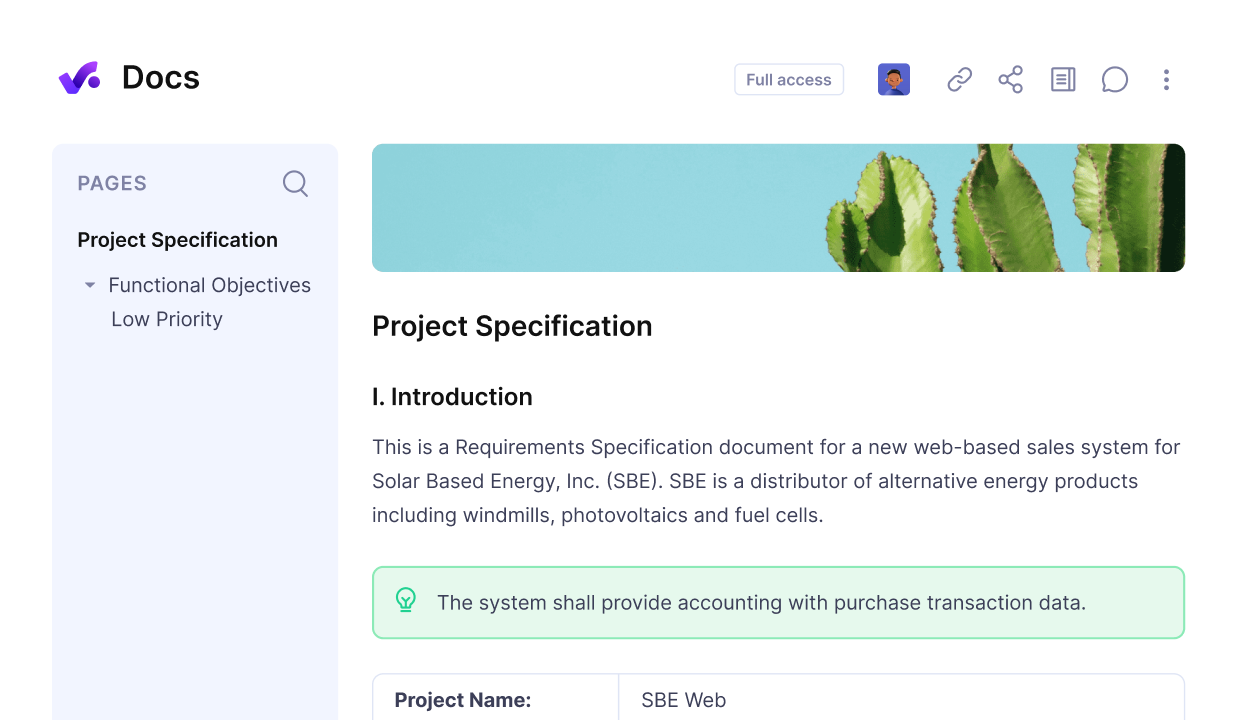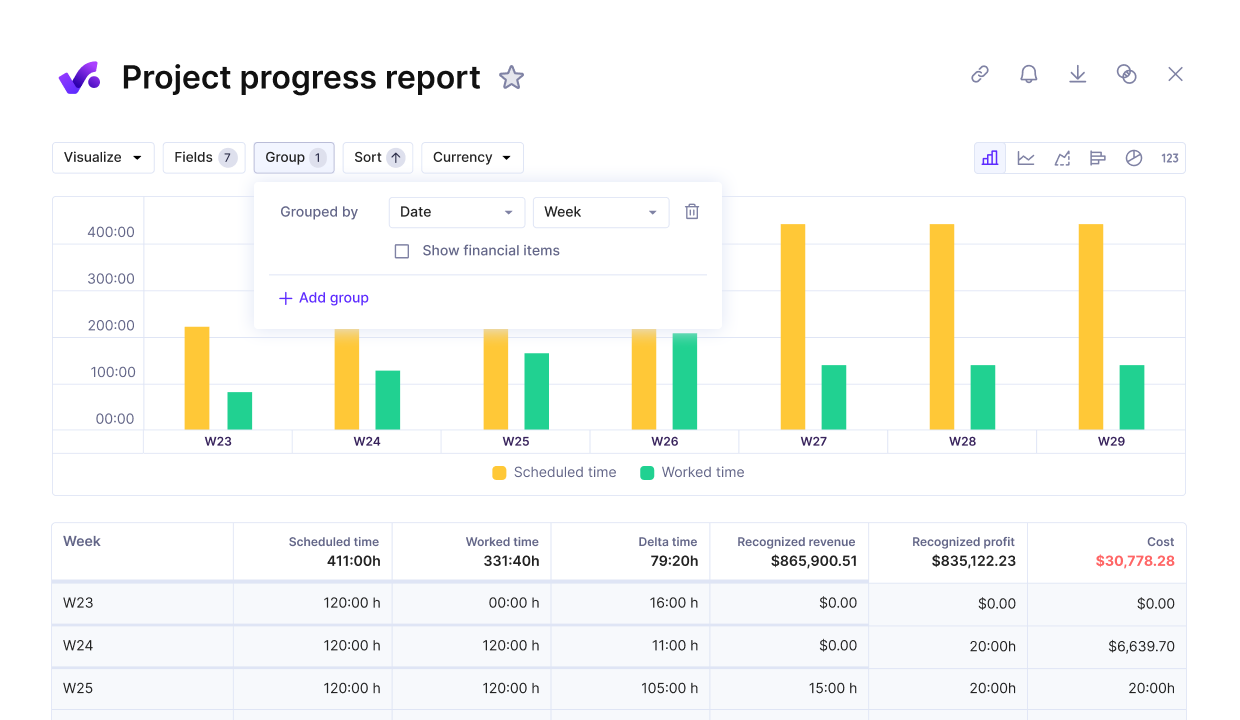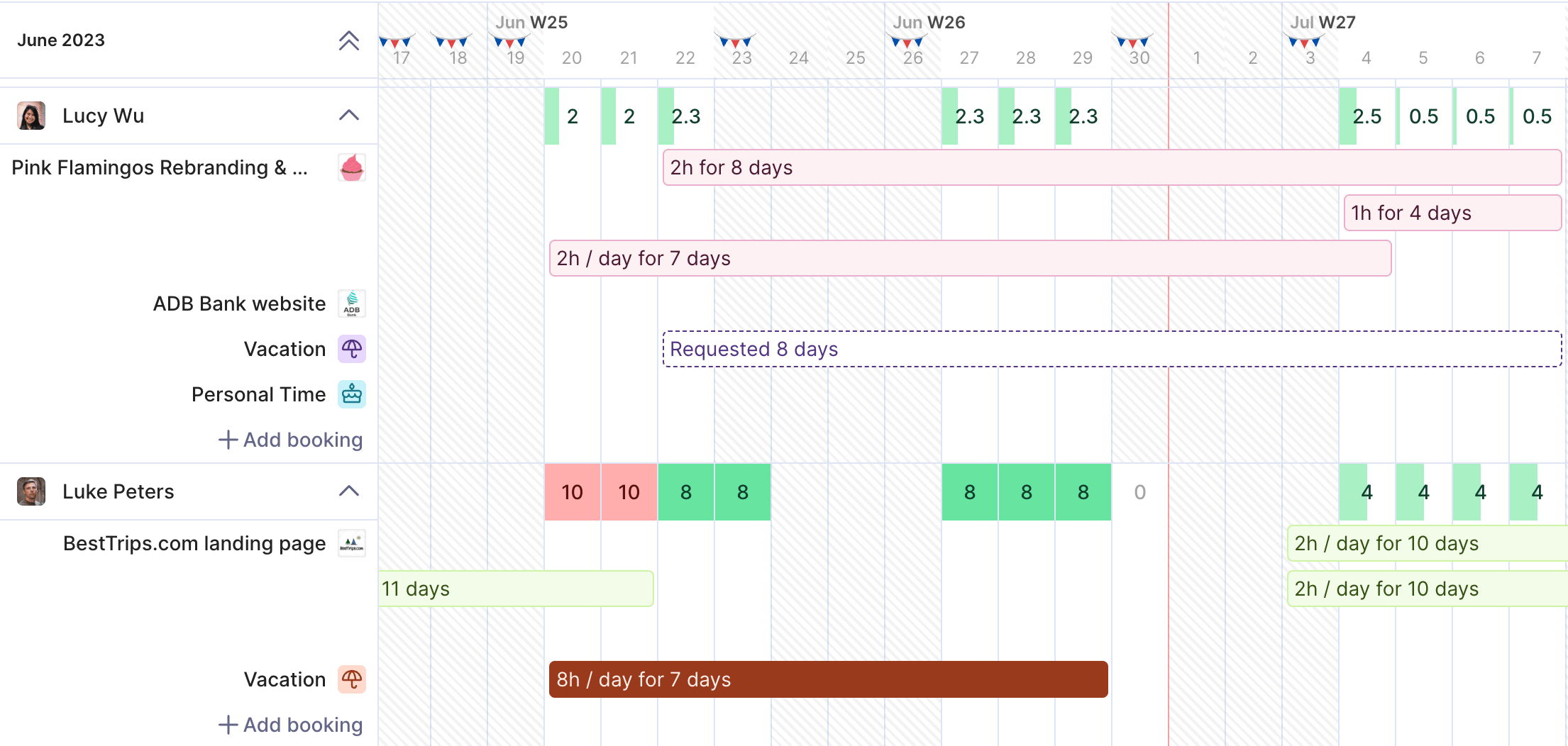Scope Creep in Project Management: Tips for Successful Projects
Don’t let scope creep dictate the success of your project. In this article, we’ll discuss the definition of scope creep in project management, provide real-life examples, and discuss strategies for preventing and mitigating risk to help you ensure better project outcomes.
Key Takeaways:
- Scope creep occurs when project requirements expand in an uncontrolled way, often causing project delay and budget overruns
- Some of the main causes include: unclear requirements from the start, lack of communication, unrealistic objectives or expectations, and internal disagreements
- Prevention strategies include maintaining clear documentation, developing change management strategies, and tracking key performance indicators
- Use project management tools and software to track changes, monitor scope baseline, and identify potential deviations early
What Is Scope Creep in Project Management?
In simple terms, a project or team is experiencing scope creep when the project requirements expand beyond what was originally planned.
However, not all changes to scope should necessarily be characterized as scope creep; only those that are uncontrolled.
Changes to scope are a usual part of project development, especially for fast-paced projects with a lot of variables, such as software development.
According to a PMI report, as much as 50% of projects result in scope creep.
Still, project managers should work on prevention, as uncontrolled changes to scope often lead to budget overruns, missed deadlines, and resource gaps. This can have a negative impact on project delivery.
Real-Life Scope Creep Examples
According to an article by IEEE, scope creep can cost up to four time as the initially expected development cost. In another survey, 62% of projects experienced budget overruns mainly due to scope creep.
Here are two famous examples of how scope creep can impact project delivery:
- The Denver International Airport wanted to design an automated baggage system. In the end, due to underestimated complexity, poor planning, schedule pressure and ineffective decision-making, this ambitious idea caused a 16-month delay with $1.1M per day costs. In the end, the design was abandoned, and a simpler manual system was constructed.
- The Big Dig was Boston’s massive highway project. While it was completed (unlike the automated bagged system) it faced a historical increase in costs. The original cost was estimated at $2.56 billion, which increased to $14.6 billion over the course of construction. Key issues included underestimated risks, poor project integration, and regulatory hurdles.
5 Top Causes of Project Scope Creep
Scope creep is a problem experienced across different industries and businesses of all shapes and sizes. Here are some lessons we can take from the project failures described above on its main causes:
1. Unclear or Poorly Defined Scope
Poorly defined project scope is among the top causes of scope creep. In most cases, it’ll lead to complications down the road.
If you need to work out details after the initiation phase, this will likely impact your production staff—without a clear plan, your teams will be working blind.
This either leads to significant delays (as work is completely more slowly), the need to re-do deliverables once the details are set in stone, or periods of underutilization, as your employees wait for specification.
These issues can stem from the client, if the project isn’t well defined internally, but it’s often the project manager’s job to identify these issues and try to address them before the project execution phase.
2. Poor Communication
Poor communication can stem from a couple of different sources:
- Starting off at the wrong foot (with a scope that’s too weak or broad) has a lasting impact on project organization and execution
- Another big factor is a lack of standardization in project management; for example, variation in how statuses and treated and what they mean
- Lack of procedures for managing change—when one thing is changed, it can create a ripple effect on other tasks, and cause a lot of confusion and delays
- Not having regular feedback sessions, which can cause backtracking at the wrong time
When communication breaks down, it creates uncertainty, misalignment, and uncontrolled changes. This speeds up scope creep and makes it harder to keep projects on track.
3. Never Saying No to Clients
One of the most common causes of scope creep comes from project managers not being able or willing to say no to clients. The reasons for this are understandable: you want to accommodate your clients’ wishes and retain a strong client relationship.
However, when project managers or teams agree to additional tasks without adjusting timelines, budgets, or resources, they risk overloading the team, extending deadlines, and increasing costs.
To prevent this, project managers should:
- Implement a change control process, so that any new request should go through a formal evaluation to determine its impact on resources, budget, and timelines
- Explain how a change affects the project’s timeline, costs, and overall success
- Propose an alternative solution that can be a compromise between the client’s wishes and possibilities
To be able to test the outcomes of different situations and provide real results to clients, you’ll want to look into scenario planning software. These types of tools can help you model the results of different scenarios to find your best path forward.
Manage scope creep with Productive’s scenario planning features
4. Unrealistic Objectives and Feature Creep
Unrealistic project objectives can stem from poor communication or not setting boundaries with clients. However, they can also arise from inexperience or feature creep.
In the case of experience, project managers can underestimate the complexity of a project. This can lead to inaccurate timelines, or the need to rework parts of projects down the line.
Unlike traditional scope creep, feature creep is driven by the internal desire to enhance a product rather than external requests from project stakeholders. It typically happens in software development, where teams keep implementing additional features, thinking they’ll improve the product.
While feature creep often stems from good intentions, it can stretch resources thin, cause project delays, and shift the focus away from core deliverables.
To prevent this, a project team should stick to the project’s original objectives and prioritize features based on the value it adds to the project (check out Lean project management if you’re interested in value-based methodologies).
5. Internal Stakeholder Disagreements
Sometimes your project can experience cost overruns and project delays through no fault of your own. Project stakeholders can be too inexperienced to correctly formulate their requirements and define the project scope.
Additionally, some projects will have too many stakeholders contributing to the same project plans. Keeping these different expectations and visions aligned can be challenging, even to experienced project staff.
When stakeholders have conflicting priorities or differing interpretations of project goals, it can lead to frequent revisions and delays. Misalignment among decision-makers can also result in inconsistent feedback, forcing project teams to redo work or shift direction multiple times.
Without a clear escalation and decision-making process, these disagreements can stall progress, increase costs, and create frustration among team members.
How to Prevent Project Management Scope Creep
Now that we’ve explored some of the main causes of project scope creep, let’s discuss key strategies for delivering successful projects:
- Creating a detailed project plan and putting the most important project details in writing
- Developing a process for implementing change
- Conducting frequent feedback sessions
- Using project management software to track the most important performance indicators
Putting Details Into Writing
Making sure that everything is clearly lined out in writing is the best way to keep your project on time and within budget.
One important document is the project scope statement. It defines the boundaries, deliverables, and objectives of the project, and is developed during the initiation phase of your project process groups.
The scope statement is also a foundation for creating a scope management plan to prevent scope creep, ensuring that changes are properly reviewed and controlled.
Your scope statement should clearly define what’s in and out of the original project scope, helping you manage stakeholder expectations effectively.
Another frequently used project management technique is the work breakdown structure (WBS). It’s used to break up larger project milestones into smaller tasks and helps visualize everything that needs to be done to deliver the entire project.
The WBS is a component of Waterfall project management; teams that use other methodologies might use different techniques, such as Kanban boards or Scrum backlogs, though their principles are similar.
You need to have your original scope organized and visible to improve planning and communication down the line.
Develop a Change Management Plan
While clear documentation is the beginning of good project management, putting a change management process in place is the next main step.
Here are some basic steps for implementing change:
- Ensure that requests for changes are clearly defined—what’s being added, how does it impact your timeline, and which resources does it utilize
- Assess how the change will impact your current circumstances, such as the project schedule and project budget
- Present the change to relevant stakeholders—if the change is suggested internally, this includes the client, while external changes should be communicated to team leads
- If approved, adjust project documents, including timelines, budgets, and task assignments
- Track the effects of the change to ensure it’s delivering the expected outcomes
Remember to align your change management strategies with organizational goals while maintaining clear communication channels across all project levels.
Implement a Structured Approval Process
Instead of allowing changes to be implemented informally, establish a clear decision-making structure.
To do this, set up a formal process where all change requests go
through a review by relevant stakeholders before approval. Assign a responsible party, such as a project manager or steering committee, to evaluate changes based on their impact on budget, timeline, and project goals.
Additionally, ensure that all modifications are documented in a central system to maintain transparency and accountability. Using project management software can help automate approvals and track decisions.

Use a project management tool to keep project documentation in one place
Establish Regular Feedback Loops
Consistent feedback loops are essential for identifying and addressing potential scope creep before it becomes a major issue.
By scheduling regular check-ins with key stakeholders, teams can ensure that expectations remain aligned and that any concerns or requested changes are discussed early in the process.
Using Agile frameworks such as Scrum in project management, with sprint reviews and retrospectives, which can help teams continuously refine their processes and maintain focus on project goals.
The benefit of Agile is that the product is developing incrementally, so that each increment of a working product is reviewed for functionality and design.
This helps project teams build a great product while ensuring that any necessary adjustments are made early, with can prevent backtracking and costly reworks.
Tracking Performance Metrics
Monitoring key project performance metrics is a proactive way to prevent scope creep by identifying deviations from the original plan. By tracking factors such as budget variance, schedule adherence, and resource utilization, project managers can spot early warning signs of risk of scope creep.
Common metrics to monitor include planned vs. actual progress, cost performance index (CPI), schedule variance, and the number of change requests submitted.
Additionally, monitoring metrics isn’t important just for keeping the project in track. By having your data readily available, you can report key metrics to stakeholders more easily and ensure that everyone on the project is informed and aligned.
A project is made up of hundreds and thousands of tasks and to-dos. If you can explain things reasonably, clients are generally understanding. But if you don’t have the data, you lose that story over the course of months of work. If you lose track of the details, it’s hard for clients to feel OK about the bill they’re getting at the end of the day.
How to Manage Changes to Requirements
Data points to the fact that scope creep is likely to occur in your projects, despite best efforts to prevent it.
So, when scope creep happens, there are a couple of things you can do to mitigate its impacts to your budgets, timelines, and overall project success.
Here are some important strategies you can use:
Measure Impact on Progress
First, you’ll need to measure the impact that the increased scope creep has on your timelines and budgets. Even if you’re unable to prevent it, this helps mitigate the scope creep’s worst effects.
Consider examining these critical metrics to quantify scope creep’s influence:
1. Timeline disruptions and dependency chain reactions that can cause milestone delays
2. Budget variances, including both direct costs and reduced ROI potential
3. Resource allocation shifts needed to accommodate new requirements
Re-Baseline the Project
Adjust your project to your new realities. Update your main milestones and establish new performance metrics to maintain your alignment.
This will help you get your project back on track, and reduce confusion in your teamwork and collaboration.
When implementing your re-baseline strategy, focus on these essential components:
1. Conduct a thorough impact analysis of approved changes on timelines and budgets
2. Update all project documentation to reflect the new scope baseline
3. Communicate revised expectations and deliverables to your team and stakeholders
Remember to utilize your project management software to track these adjustments and maintain clear documentation of the updated baseline for future reference.
Use Schedule Compression Techniques
When scope creep threatens to derail your project’s timeline, schedule compression techniques can help you maintain control while meeting critical deadlines.
There are two main techniques: fast tracking and crashing.
When tasks are fast tracked, it means that they’re done at the same time, rather than sequentially. The benefits of doing tasks one after another is that you can be sure that that everything in the previous stage is finalized.
However, sometimes it’s possible to speed up your work like this, especially when dependencies are minimal and your team has clear communication channels.
Crashing is used to shorten the project schedule by adding extra resources to critical tasks. This technique is usually more expensive, as it requires additional staff, but usually less expensive than the costs of breaking your schedule.
Learn more about popular project management techniques.
How to Handle Scope Creep With Productive
Throughout this article, we’ve mentioned the importance of using project management software in managing scope creep.
Productive is a purpose-built software designed to support professional services businesses in managing their project performance.

Create clear reports on your project status with Productive
It combines features for task management and collaboration, including a client portal, which supports better communication. Productive also offers advanced budgeting features, including forecasting and scenario planning, which are invaluable for predicting future outcomes and minimizing risks.

Allocate resource and manage time off
Productive also provides a resource planner for managing employees, and real-time reporting on time tracking, profitability, revenue, and much more. With this crucial data, you can ensure you’re making informed decisions for maintaining a healthy cash flow and controlling scope creep.
Book a demo with Productive today to learn how it can help you manage your projects more successfully.
Optimize Scope Management With Productive
Keep your projects on time and budget with all-in-one project management software.
